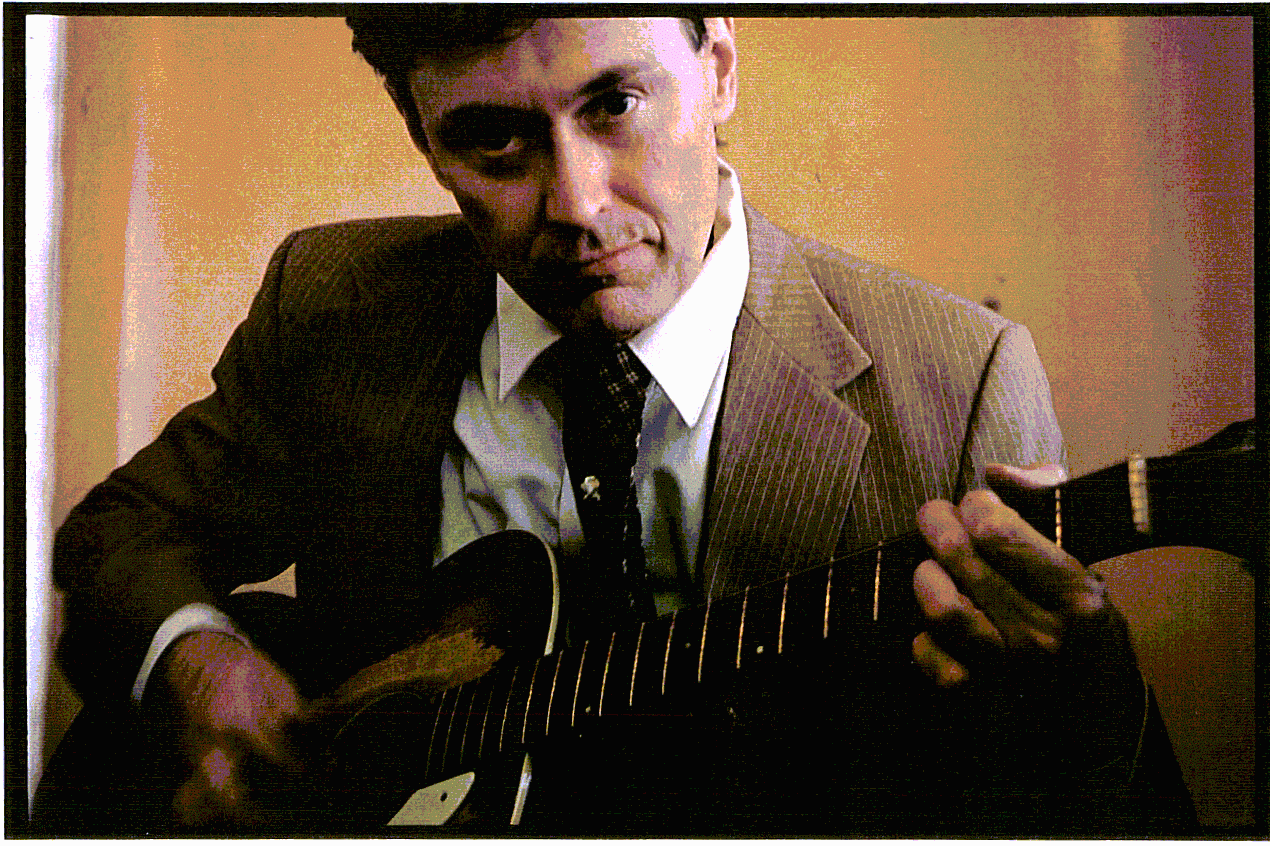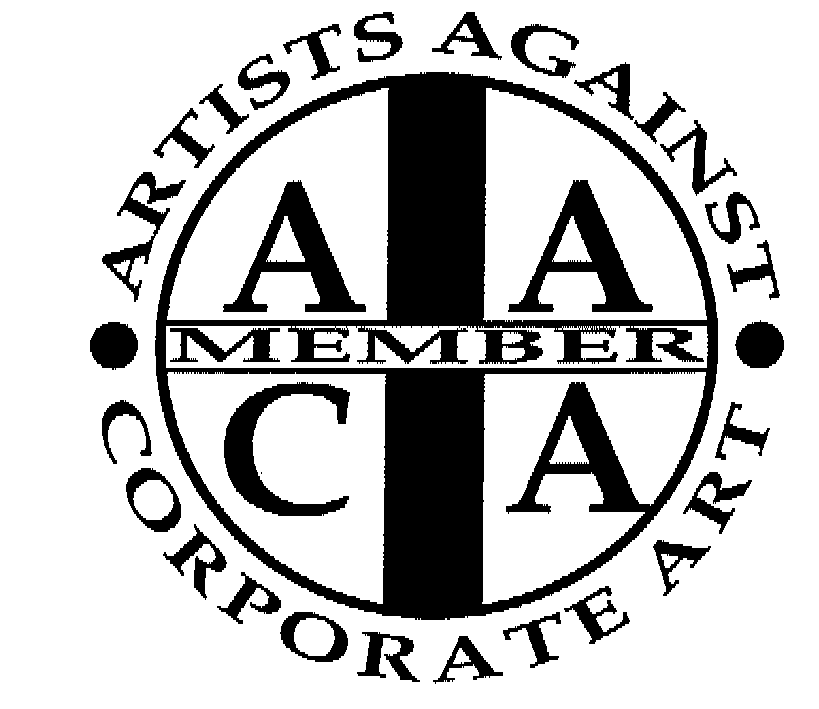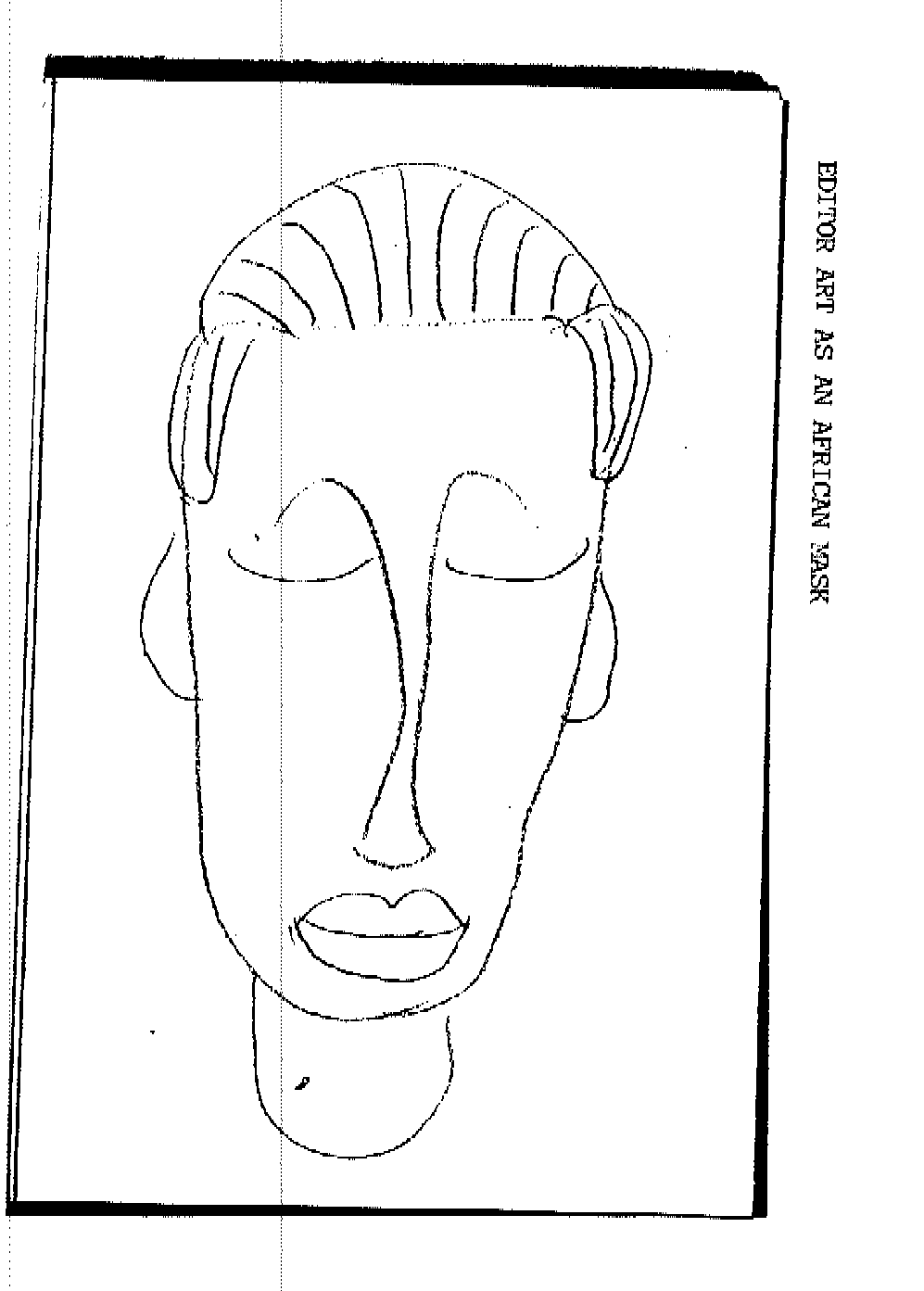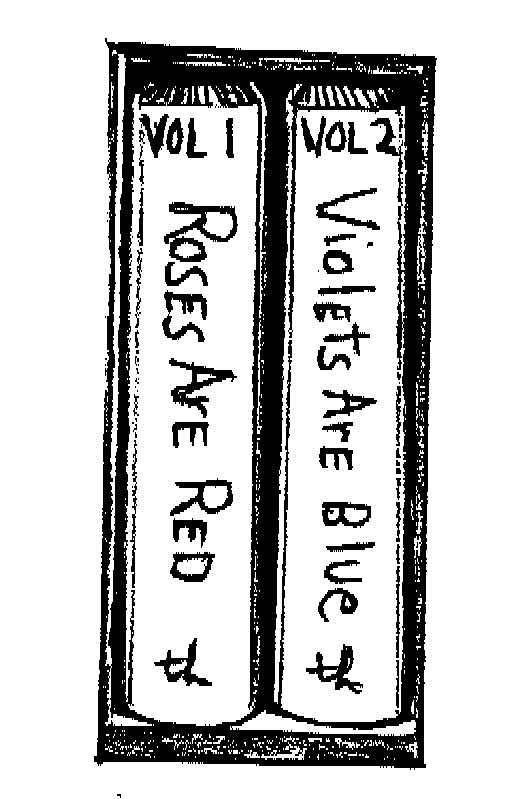 <h1 align="center">Art for Whose Sake?</h1>
<h1 align="center">Art for Whose Sake?</h1>MUSEA creator Tom Hendricks Discusses the Evils of Corporate Art
by Michael DittmanMichael Dittman: Tell me about the genesis of MUSEA and the indie emblem.
Tom Hendricks: I'm going to do this in two parts. MUSEA began out of frustration. I'm in my forties and I've been a musician since 1964. I saw the Beatles and said, 'Boy, I'd like to do that.' In 1974 I started writing and painting as well, so I consider myself doing all three of these equally. No matter what I did in music, composing, singing, playing or painting; drawing, illustrating, or writing poetry, novels, essays, short stories or whatever, over and over again the door was shut. I finally started saying, 'Maybe I'm not good enough.' But then I started looking at a lot of my friends who I thought were extremely talented and they were getting the same treatment. Then I saw that the people who were being promoted were awful. So I decided two things. I decided that it was the system and I decided that I would never stand a chance. I had been writing letters to a number of local publications and sometimes they would print them but most of the time they wouldn't, and so I started MUSEA out of frustration; to try to get my ideas out there because I didn't think anyone else ever would. I wanted to have my writings and poetry and essays and illustrations in there, but I also wanted to showcase other artists who were blocked out of the system. That's what started MUSEA.
The indie problem was a way of uniting indie artists together to oppose this enormous symbioses between corporate art and the media. I say that in the sense that they're going on as if there were no other artists out there; as if it's a closed society and they are it. This was sort of a Taoist way of protesting it. By using the symbol you don't boycott or criticize anybody; you don't write angry letters. By putting this on your work you say that corporate art isn't all there is and there is a growing group against it. I put it out there and said 'Let's see what happens.'
I say that in the sense that they're going on as if there were no other artists out there; as if it's a closed society and they are it. This was sort of a Taoist way of protesting it. By using the symbol you don't boycott or criticize anybody; you don't write angry letters. By putting this on your work you say that corporate art isn't all there is and there is a growing group against it. I put it out there and said 'Let's see what happens.'
MD: What do see in store for independent art?
TH: In the February '95 issue there's an article called The Revolution in Arts Technology or How I'll Win the War, Daddy. What I'm saying here is the revolution has allowed almost anybody in the United States to be technically as good as corporate art so in a sense it's opening the door for independent artists. In the long run, technology will be the reason the arts revolution succeeds. I give a lot of examples in the magazine and I'd like to add one more. The Internet is the first time independent citizens have been able to have a mass audience without corporate sanctions.
MD: Where do you see MUSEA and the indie emblem headed in the next five years?
TH: You know in earlier MUSEA, issue #20, I did a lead story called Dateline 2000 A.D., Dallas Becomes Art Center of the World. It was brazen, very brazen, but I thought Dallas, Texas could well become the center of the world. For a number of reasons: it's in the south, it's in the United States, it's in Texas, and maybe even more importantly, Dallas wants it. I'm preparing for it and the art revolution is here. What would it mean, I'm reading from the zine here, what pragmatic steps would we have to take to make this dream come true? One, I want to set up a sort of Disneyland for the arts where anyone in the world can come to this place,anytime day or night, and there would be theatre, film, live entertainment; a library of classical literature and zines and lit, mags and continuing displays of art. Also, prt of the art revolution is mass production of paintings on canvas, which I've talked about in a number of my publications. Painting is the last of the arts to be massed produced, but it can be now, and I think painting will be sold like records - one master copy and millions of exact duplicates, so we'd have paintings.
There'd be this one art center and there'd be ways to send from this center some type of broadcast on a satellite to all the parts of the world so they could see theatre every day on some sort of channel. The MUSEA channel! You'd have theatre and literature and paintings. Also set up an art center that would preserve the art from the past. Set up databanks, libraries, record all the world art plus funds for preservation and for the future. Set up some of the profits to preserve contemporary art, to fund artists and projects throughout the world. So MUSEA is like the first salvo. I'd also like to do a MUSEA as the world art magazine monthly and also a MUSEA Jr. for kids. My plans are fifty years ahead of where I'm at.
The indie emblem is just going to do what it's going to do. If a lot of people continue to add it to their work then it will continue to grow and help support some big changes. If not, it will quietly die and there's nothing I can do about it.
MD: In your description of year one after the art revolution, you talk about the creation of some sort of indie artist Disneyland. What would make that different from say, R.J. Reynolds sponsoring the Whitney?
TH: It would be permanent, not a one-time sponsorship. Instead of a company sponsoring an art event, it would be more of a co-op of artists; a group of artists working together to support art for profit. The second difference is that there would be a much larger scale. It wouldn't be just art, it would be art, theatre, films, theatre productions, symphonic performances - every aspect of art would be available here.  There would be a broadcast center so art could be sent via satellite across the world.
There would be a broadcast center so art could be sent via satellite across the world.
MD: Should the government sponsor artists through the NEA or similar outlets?
TH: No. There's a grant catch-22. You can't make a profit at what you do best. Now, that wouldn't bother me so much if the government didn't give college grants to lawyers and doctors. When they graduate, do they have to work non-profit? It's only a proviso for artists. Somehow, the very thing we do best, they'll pay us money not to make money on.
If the NEA has a place in supporting the arts, I suggest they create art centers all across the country. They put up the building and then get the hell out of the way and let the community run the center. The community can set up and use the center for any reason: meetings, displaying their art, art exhibits, music, publishing efforts, theatre, or to have discussions or visiting artists. An art center that's truly democratic. No committees judging at the door. You open the door, people sign up, first come first serve, and the community has an arts center that's viable and talks about what's important to the community.
MD: Who's more of a threat to independent art: Newt Gingrich or Time Warner?
TH: Time Warner. I think corporations have the power in this government through lobbyists. They seem to control the government and the government seems unable or unwilling to stop the growing monopolies in art. One hundred years ago, the government stood up to the monopolies and broke them down. Teddy Roosevelt was known for that. In 1948, gvernment stood up to them again and said that Paramount could not own both the film making studios and the theatres. I think the solution for ending the art monopolies is the government forcing them to choose one or the other.
MD: In a perfect world would everyone be an artist, or I guess I should ask, is everyone an artist?
TH: Everybody can learn to play the piano, but few will be good at it. Not everybody has the talent or the inclination for art, any more than everybody having the inclination for sports or history or business, but the opportunity should be there and schools fail in providing that opportunity. Art is one of the delights of being alive. And instead of compelling people to be interested in the arts, it should be like chocolate. Everybody should have the opportunity to enjoy it. It's a part of the delight of being alive, one of the great joys of life.
Back to Main Page
 I say that in the sense that they're going on as if there were no other artists out there; as if it's a closed society and they are it. This was sort of a Taoist way of protesting it. By using the symbol you don't boycott or criticize anybody; you don't write angry letters. By putting this on your work you say that corporate art isn't all there is and there is a growing group against it. I put it out there and said 'Let's see what happens.'
I say that in the sense that they're going on as if there were no other artists out there; as if it's a closed society and they are it. This was sort of a Taoist way of protesting it. By using the symbol you don't boycott or criticize anybody; you don't write angry letters. By putting this on your work you say that corporate art isn't all there is and there is a growing group against it. I put it out there and said 'Let's see what happens.'
 There would be a broadcast center so art could be sent via satellite across the world.
There would be a broadcast center so art could be sent via satellite across the world.